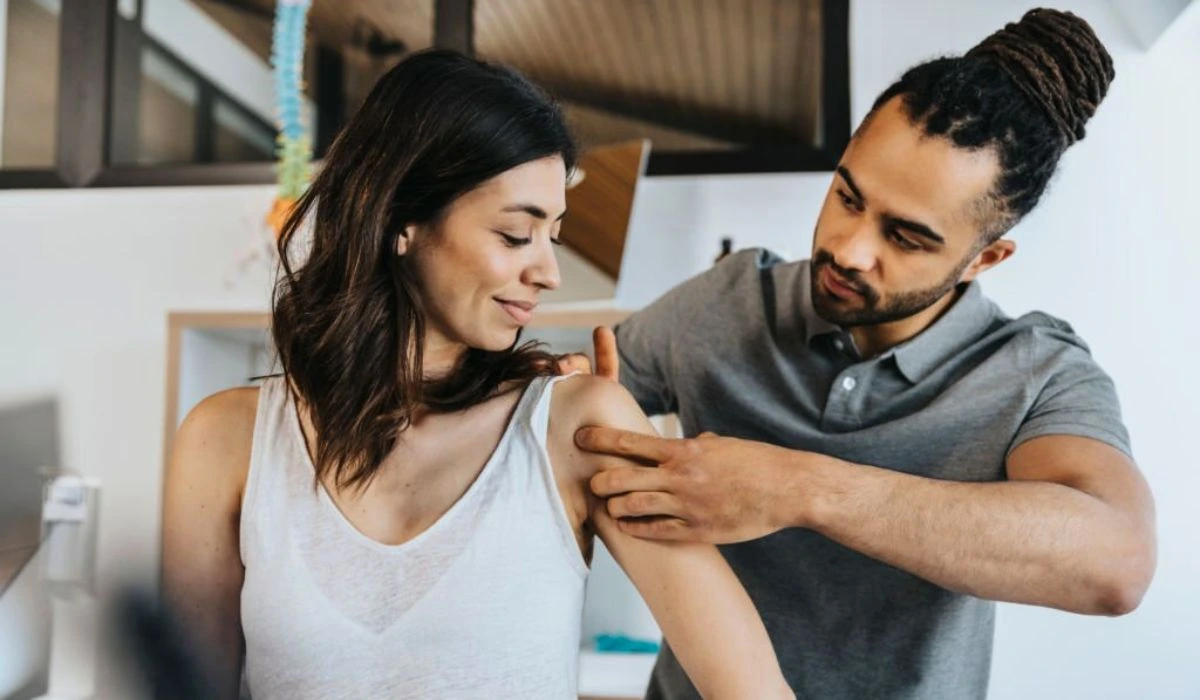After shoulder surgery, rehabilitation is essential to regain motion, strength, endurance, proprioception, dynamic stability, and neuromuscular control.
Different rehabilitation techniques will be used depending on the precise injury and procedure. Athletes must care for their shoulders, especially if they participate in overhead sports or heavy labor. Athletes frequently suffer from shoulder ailments, some of which call for surgery. To fully restore their strength and mobility, athletes benefit greatly from rehabilitation.
The SLAP tear, anterior and posterior shoulder instability, rotator cuff tears, and elbow ulnar collateral ligament (UCL) tears are common shoulder problems that may require surgery.
Pre-Surgery Preparation
Before surgery, a consultation with a sports medicine expert is necessary. To ascertain the precise nature of the issue and the most suitable course of action, several diagnostic tests and evaluations, including X-rays, MRIs, and physical examinations, are carried out.
Athletes should psychologically be ready for the surgery by learning about its objectives, possible dangers, and anticipated results.
Also Check: Rehabilitation For Soccer Goalkeepers – Rehab Exercises Explored
Different Shoulder Surgery Methods
Rotator cuff repair, labral repair, and acromioclavicular joint reconstruction are common shoulder operations for athletes. Each surgery seeks to restore function, stabilize the body, and heal ligament damage.
Instant Post-Operative Care
Following the surgeon’s post-operative instructions, as well as pain management, is important throughout the immediate postoperative period.
🔹 Early Rehabilitation (Weeks 1-6)
The objectives of the initial rehabilitation phase are to reduce discomfort and inflammation, regain range of motion and flexibility, and refrain from actions that can result in more injury. Range-of-motion training is crucial during this stage.
🔹 Intermediate Rehabilitation (Weeks 7–12)
Various exercises and therapies are used in the intermediate rehabilitation phase, focusing on strengthening exercises for the shoulder and the muscles around it.
In this stage, physical therapy is quite important.
🔹 Advanced Rehabilitation (Weeks 13 and beyond)
Proprioception, dynamic stability, and neuromuscular control are intended to be recovered during the advanced rehabilitation phase.
Drills and exercises unique to sports are incorporated, emphasizing a gradual reintroduction to sports activities.
Progression Of General Shoulder Rehabilitation
Following shoulder surgery, overhead athletes’ recovery should concentrate on:
- Reducing discomfort and inflammation
- Regaining movement, power, and endurance
- Regaining dynamic stability, neuromuscular control, and proprioception
- 1 exercise after shoulder surgery
Regular exercises to regain the shoulder’s range of motion and flexibility are crucial for fully recovering from surgery. Some exercises could be:
- Internal and external rotation of the shoulder
- Flexion and extension of the shoulder
- Abduction and adduction of the shoulder
Back To Sport Participation Standards
Following a shoulder injury or surgery, three steps must be taken sequentially to return to sport:
- To high-level functional activities once more.
- Back to sports-specific pursuits
- Back to the competition
Return-to-play standards should be based on particular standards to advance the athlete through the recovery process.
✅ First, Fully Recover.
Before getting back into sports, giving the shoulder time to heal is crucial. It’s critical to move slowly and keep safety top of mind.
✅ Pay Attention To Shoulder Strength.
For athletes returning to sports following shoulder surgery, shoulder strength is essential. Emphasize shoulder and surrounding muscle-strengthening exercises.
✅ Slowly Re-Enter The Game.
To avoid re-injury, it’s imperative to resume athletic activities gradually and under supervision. Follow the post-operative instructions provided by their surgeon, and if any difficulties develop, athletes should contact a doctor.
How Long Does It Take For Pain To Subside After Shoulder Surgery?
Depending on the complexity of the necessary repairs, each person’s recovery time following shoulder surgery is different.
Immediately following surgery, discomfort is typical, and patients frequently receive painkillers to control it.
Cold packs can also be used on the area to lessen discomfort and swelling.
After surgery, the initial recuperation phase may last up to six weeks. During this time, the arm should be maintained in a sling, and the shoulder should be kept as motionless as possible.
Over two to three weeks, patients should refrain from lifting anything heavier than a plate or a glass.
Most people take six weeks or longer to recuperate, depending on the type of surgery they underwent.
Patients might need to restrict their activity until their shoulder strength and range of motion return to normal.
Avoiding Complications
Frozen shoulders and infection are possible post-operative side effects. Athletes should adhere to the post-surgery recommendations of their surgeon and get medical help if they experience any difficulties.
Mental Health Considerations In Rehabilitation
During rehabilitation, athletes may experience mental difficulties like frustration, worry, and sadness. Setting attainable goals, enlisting the aid of friends and family, and concentrating on developing the rehabilitation process are techniques for keeping a positive attitude throughout the procedure.
Dietary Intake And Healing
In the healing process, a proper diet is crucial. Athletes should adhere to dietary recommendations while undergoing rehabilitation, which include getting enough protein and staying hydrated.
Resuming Exercise
Specific standards should be used to determine whether an athlete can resume competitive play to advance the athlete through the healing process.
A slow and monitored return is necessary, and injury prevention and continuing maintenance activities should be stressed.
Read More: Sports Injury Rehabilitation For Swimmers: Find Out The Expert Tips
Conclusion
Recovery from shoulder surgery in athletes involves a thorough process to regain motion, strength, endurance, proprioception, dynamic stability, and neuromuscular control. Working closely with a physical therapist and adhering to their recommendations are essential throughout rehabilitation.
The rehabilitation procedure should be customized to the athlete’s unique demands and goals. Return-to-play standards should be based on precise standards to advance the athlete through healing.

